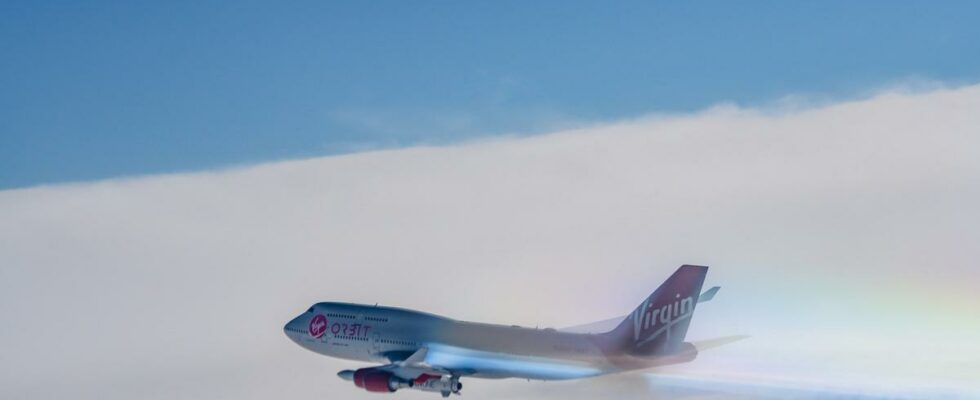The first launch of the “Start me up” mission, piloted by Virgin Orbit, took place on Monday from the Newquay site. Supposed to open up prospects for the commercial and military market, it ended in failure.
British humor continues to sweep over the space industry. There had been, in February 2018, the “don’t panic– a message for the model behind the wheel – written on the dashboard of the cherry red Tesla, launched by the Falcon Heavy rocket. There will now be the missionstart me up” – literally, “turn me on“, in English, in reference to the song of the Rolling Stones. But also the giant step that it was supposed to have the United Kingdom take to acquire an autonomous capacity for access to space. Alas, the first rocket ever launched into space from British soil did not, for a reason that was not made public immediately, not reach the desired orbit on Monday evening.
The mission, piloted by Virgin orbit, a space company co-owned by billionaire Richard Branson, was to launch nine small satellites into low orbit on behalf of seven private and government customers. It should have been a first in many respects. As well as being the first satellite launch from Western Europe, it was also the baptism of fire for the site of Newquay, a hotspot in south-west England, well known to surfers, which has vocation to become the first spaceport based in Western Europe (it already has the French spaceport of Kourou, in Guyana, but it is based in South America).
A modified Boeing 747 with a rocket under its wing
Start Me Up is the result of a cooperation between the UK Space Agency (UKSA), Cornwall Council, the Royal Air Force and Virgin Orbit. For the latter, it was also a first since it was the very first mission outside its bases in the United States. This, with a launch system, combining an aircraft and a rocket, which was tested in 2017 across the Atlantic. The modified Boeing 747, dubbed “Cosmic Girl“, took off well Monday evening with, fixed under one of its wings, the rocket Launcher One. Once the 35,000 feet reached as planned, an altitude of some 10.5 km, the aircraft seems to have been able to release the rocket which, at this precise moment, had to turn on its engines to tear itself away from the Earth attraction and reach low orbit to deploy the satellites installed under its fairing. This last step seems to have failed. “It seems that an anomaly prevented us from reaching orbit. We evaluate the information»commented Virgin Orbit laconically in a press release, ending the live and online broadcast of the event.
The success of the mission was supposed to give credibility to the ambitions of the Newquay spaceport to become the HQ for the express launches of small commercial but also military satellites, thus serving as a dedicated infrastructure for what the armies call: “responsive launch”, or a reactive launch in the face of an emergency situation.
Read alsoTesla, Space X, Twitter… Elon Musk’s crazy year
“Ukraine woke up the world in many wayssaid Dan Hart, chief executive of Virgin Orbit, on Sunday. The conflict demonstrated the usefulness of satellites to help the Ukrainian armies position themselves, identify targets and neutralize them. The war in Ukraine has also shown the importance of responsiveness, like Elon Musk, arrested by kyiv on February 24, the day of the Russian invasion, who had terminals delivered to Ukraine within 48 hours so that the country is connected to the Internet via its Starlink constellation. This replaced the largely destroyed terrestrial internet network.
” There is clearly hope for pan-European, as well as American collaboration…to be responsive so that if something happens in the world we can deploy satellites immediately“, believes Dan Hart. The Royal Air Force plans to carry out test missions to demonstrate the relevance of this type of ultra-fast launch. According to several analysts, other spaceports operating on the same model could open in the world, to provide rapid launch capabilities to armies.
SEE ALSO – War in Ukraine: Unesco uses satellite imagery to monitor heritage damage
